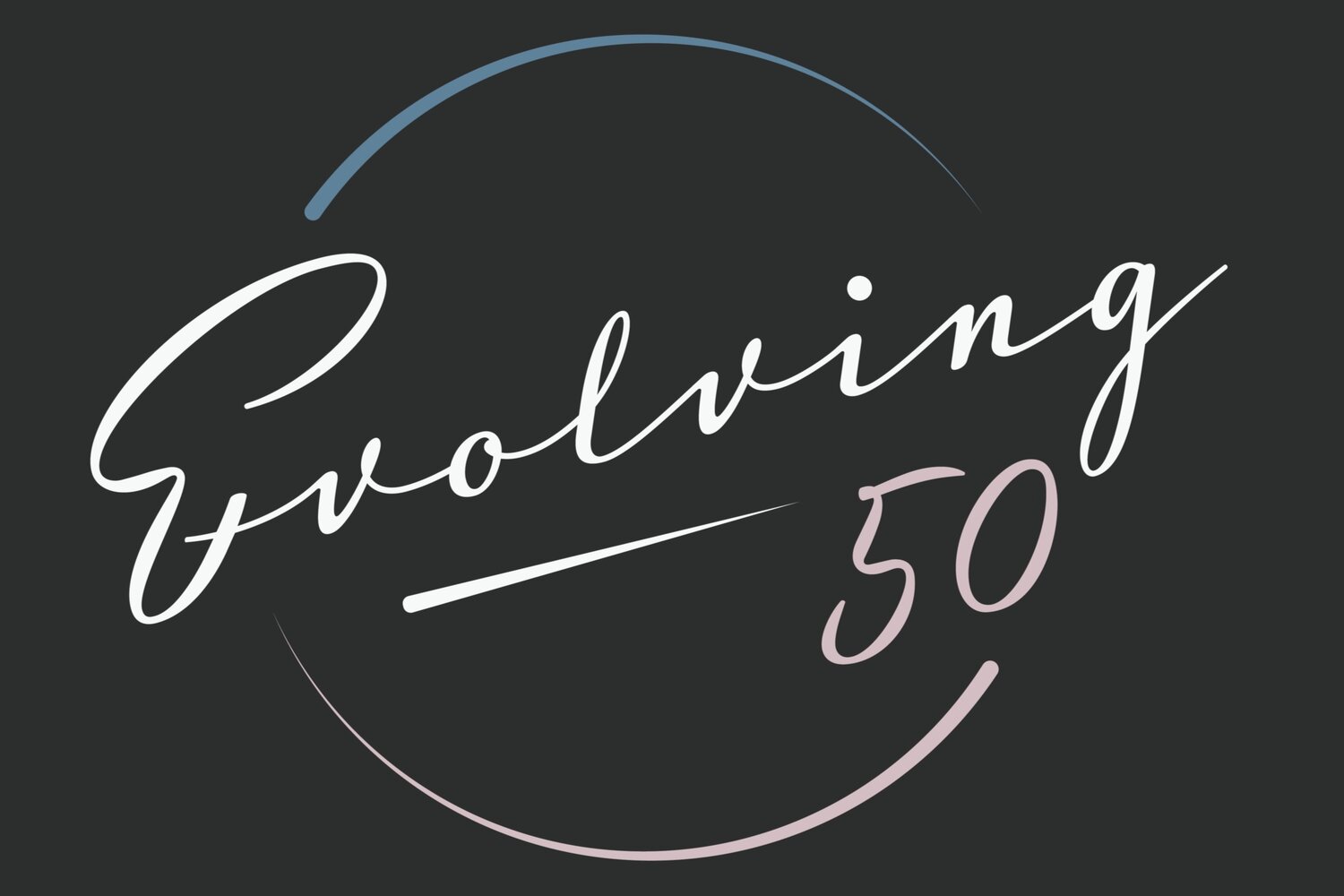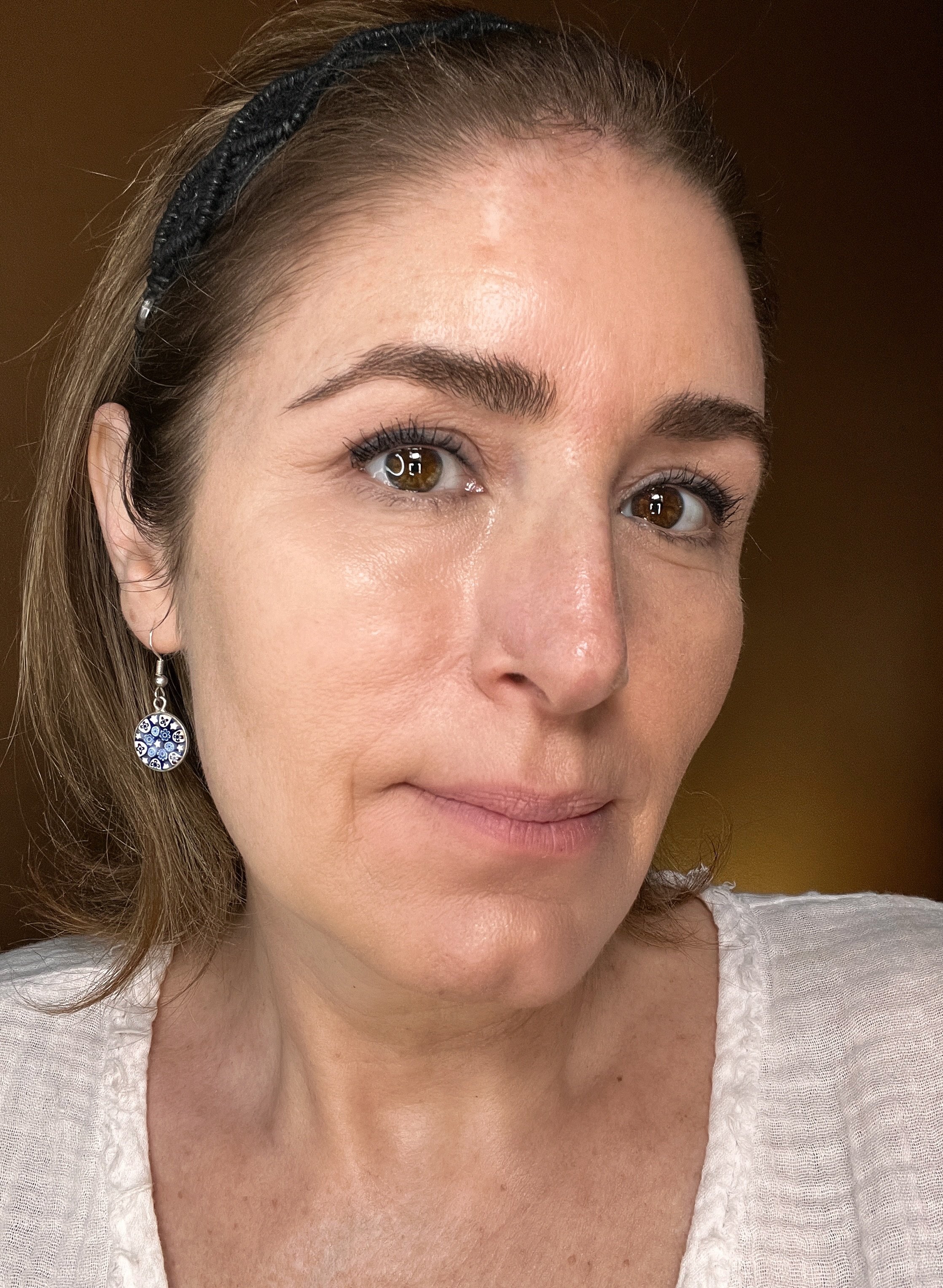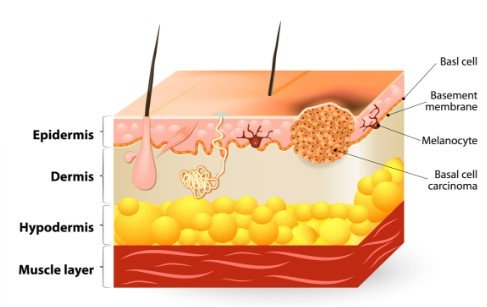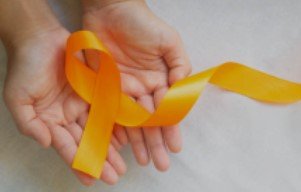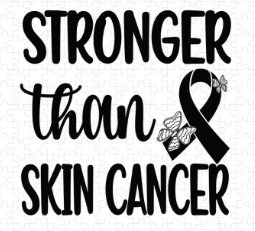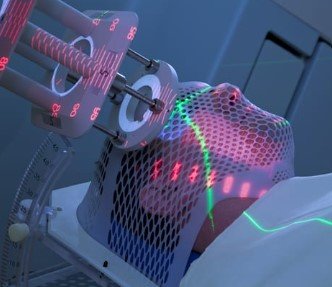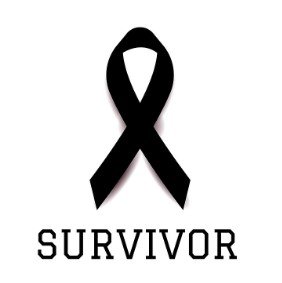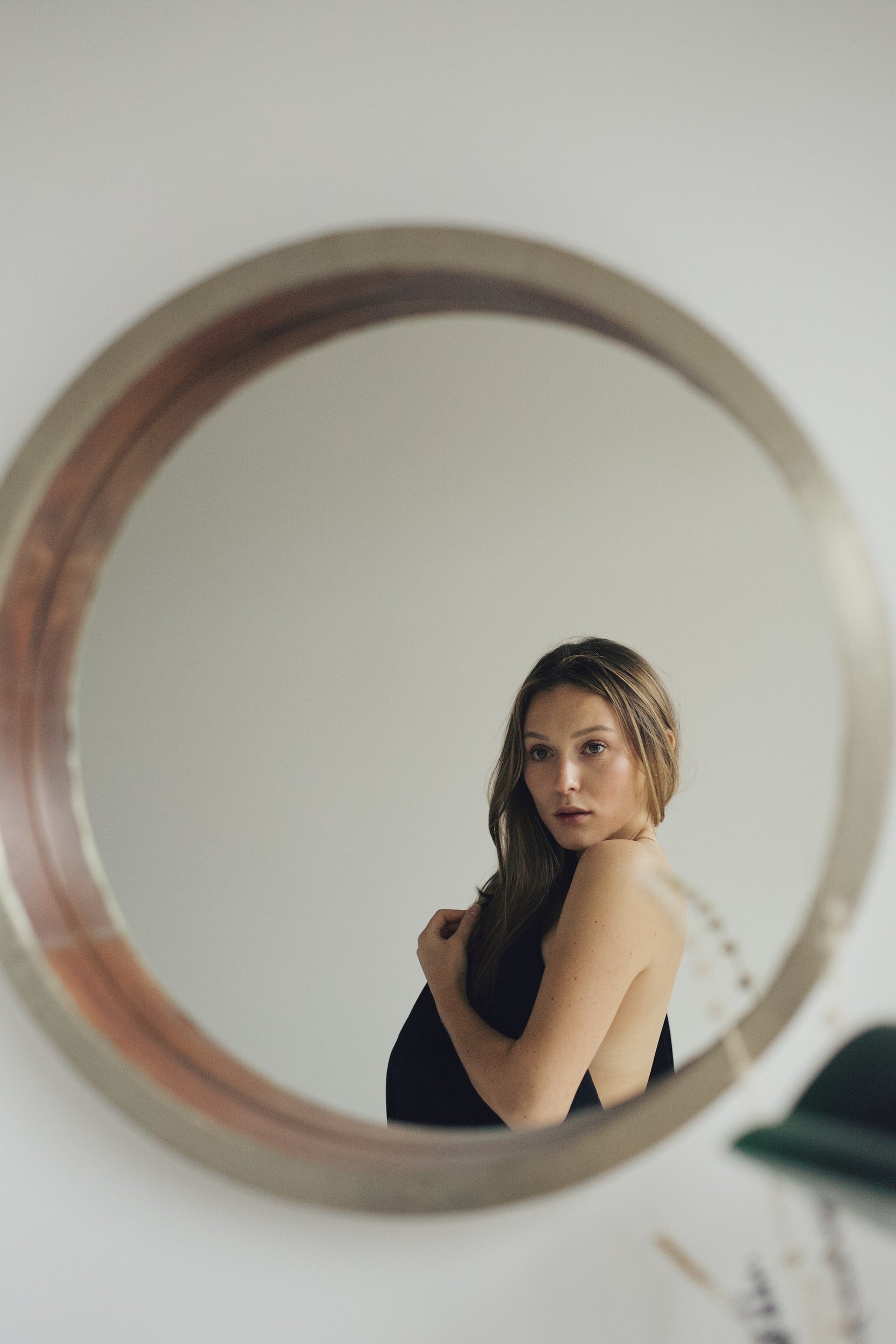Life With Skin Cancer - Three Spots that Changed My Life
Two years after my third Mohs surgery, my wounds (physically and mentally) are still healing. Read on to learn how I cope and live Life with Skin Cancer.
Skin cancer is the most commonly diagnosed cancer, but it can also be the most preventable if you protect yourself. May is Skin Cancer Awareness Month, and it is my mission to encourage you to reduce your risk.
Be Proactive to Reduce Your Risk - Detect and Protect
I invite you to follow along as I take you through my journey. Learn how you can be proactive about detecting skin cancer and how to protect your skin. #ThisIsSkinCancer
Please read to the end, as I share with you my favorite tried-and-true SPF’s that will aid in combating cancer-causing sun damage.
I was 36 years old when I noticed a pearly raised mark on my lower, right cheek. My daughter had been born about a year earlier and I attributed the mark to a hormonal skin issue. It continued to increase in size so I decided to have it checked out. Not because I thought something was wrong, but because I didn’t like the way it looked.
I had no clue it would be skin cancer. Basal Cell Carcinoma was the diagnosis. I would need Mohs surgery. Not really understanding the procedure or anything about skin cancer, I started doing research. Basal Cell is the slowest growing form of skin cancer and Mohs surgery has a very high success rate of getting rid of the cancer. I felt relatively positive about the procedure.
What I didn’t realize is that the small, pearly mark sitting on my cheek was just the tip of the iceberg. I soon found out it was so much more. My skin cancer spot ended up being much deeper than anything I could imagine. Beneath the surface of my skin, the cancerous growth had become quite large, and in an instant, everything was about to change.
Basal cell carcinoma
Basal cell carcinoma usually grows very slowly under the skin and often doesn't show up on the surface for many years after long-term exposure to the sun.
Immediately after my surgery, I couldn’t move anything on the right side of my face. It was as if it were paralyzed. I was terrified! My dermatologist told me it could be nerve damage. He explained it as the cancer is like fingers that were wrapped around the nerves. The paralyzes could also be temporarily caused by the numbing agent used during the surgery and we would know once the topical anesthesia wore off. Thankfully, it was the latter and I did not have permanent nerve damage.
Soon after, I had reconstructive plastic surgery utilizing a skin flap. This procedure used healthy skin near the wound to close the incision. Post-surgery was painful, and I didn’t recognize myself due to the amount of swelling. What I didn’t expect was the mental anguish of my face looking disfigured. I remember thinking the post-surgery wound looked like a big fat worm sitting on my cheek.
Skin cancer surgeries may result in scarring or disfigurement, which can lead to psychological issues post-surgery.
It took me a good year to heal from this surgery. I didn’t go out much or socialize the first few months after my surgery, and when I did, I kept a bandage on the scar. I was more concerned about people around me feeling uneasy than I was about my own vanity. I started getting skin checks every six months, as I was told by my dermatologist that I was at higher risk of developing additional skin cancers in the future.
After one year, I was diagnosed with a second Basal Cell. It was a small, dry, red spot on my forehead. This ultimately led to my second Mohs surgery!
Fast forward to 2020, I noticed a dry spot on the side of my nose. It turned into a pimple and went away. However, the dry spot came back and would bleed. This was a red flag. Another biopsy, another positive result. I was faced with skin cancer and surgery again for the third time. I was nervous, but how bad could it be because it was so small?
In this procedure, a large area of the side of my nose was removed. It was followed up with more plastic surgery. This time I needed a Skin Graft, which took much longer than my previous Mohs Surgeries. This one was by far the worst of the three. I was shocked for a few days after looking at my face. It was unrecognizable. Warning: Graphic Photo Content (may be shocking or upsetting). TAP HERE to view my Post-Surgery Progression photos.
One of the biggest hurdles post-surgery was overcoming my low self-esteem. I was just breaking into a new career in social media. I am a BEAUTY influencer! How would I continue this path with a disfigured face? I am now approaching the two-year anniversary of my last surgery and I have overcome most of my fears.
After multiple steroid shots and laser treatments, my scars are now looking acceptable to me. I know this entire process has altered the look of my face and I will never look the same as I once did before my skin cancer surgeries. I’m not sure how I made it through everything.
I still find myself turning to one side when talking to people and I am a little self-conscious about my nose. The scar is still visible and my smile isn’t the same. My face has a new look that I’m embracing. I want to be a role model and inspire other women to embrace whatever flaws or imperfections that they think they might have. Beauty truly comes from the inside, and I want all women to feel their best.
I am not an expert on skin cancer, I just want to share my story. Hopefully, it will help others. This is my experience and what my skin cancer spots looked like. Only your doctor can diagnose and develop a treatment plan.
With summer approaching, we may increase our fun in the sun, which also means an increased risk of damaging sun exposure that can lead to skin cancer.
PLEASE GET YOUR SKIN CHECKED once a year and if you see anything that doesn’t look right, don’t put off seeing your doctor. #SharetheFacts
To help detect skin cancer early, look for any
changes
in your skin, such as:
A new growth on the skin
A sore that does not heal
A change in an old growth
Learning how to detect skin cancer makes it much easier to treat.
Tip:
Look at your skin in a well-lit room in front of a full-length mirror. Use a hand-held mirror to look at areas that are hard to see.
Spots that don’t look like others on your body
Sore that don’t heal
Redness of a mole
Spots that itch or are painful that don't go away or go away then come back
Changes in the surface of a mole: oozing, scaliness, bleeding, or the appearance of a lump or bump
If you see any areas of concern or have never had a skin cancer screening, I encourage you to contact your dermatologist.
Use the “ABCDE rule” to look for some of the common signs
Taking simple steps to protect your skin can significantly reduce your chances of getting skin cancer.
WEAR SUNSCREEN EVERY DAY! Why You Need It. How it Works for You.
Cover yourself with proper clothing.
Avoid the outdoors during the peak of the day.
Seek shade whenever possible.
Avoid using tanning beds.
You need to apply sunscreen everyday, throughout the day. Almost everywhere you go, UV rays are present.
Even on cloudy days, up to 80 percent of the sun’s harmful ultraviolet (UV) rays can penetrate your skin.
Not so fun fact: One in five Americans will develop skin cancer in their lifetime. I am one of those five. Three surgeries and three long recoveries. I’ve also had multiple pre-cancer spots frozen and removed in between all of these surgeries.
The American Academy of Dermatology recommends everyone use sunscreen that offers the following:
Broad-spectrum protection (protects against UVA and UVB rays)
SPF 30 or higher
Water resistance
It is recommended to use at least one ounce of sunscreen (enough to fill a shot glass) to fully cover your body.
It’s also so important to apply to the tops of your feet, lips, and the top of your head. Don’t forget those ears! I’ve had multiple spots frozen off of my ears (ouch!)
Keep in mind that while crucial, sunscreen alone is not enough. Seek the shade whenever possible, wear sun-safe clothing, a wide-brimmed hat, and UV-blocking sunglasses, for a complete sun protection strategy.
I have used many different sunscreens and I have many favorites, but here are just a few recommendations that I find to be my most effective.
ISDIN - Designed for photoaging defense
As one of Europe’s leading companies in dermocosmetics, Isdin’s expert formulas focus on the most fundamental skin habits to combat photoaging and damage in the skin: protecting from the detrimental effects of the sun, repairing existing damage, and correcting the visible signs of aging.
ISDIN Eryfotona Actinica Daily mineral SPF 50+ sunscreen
Eryfotona Actinica is a fast-absorbing, ultralight emulsion providing all-mineral broad spectrum sun protection. Its innovative formula contains DNA Repairsomes®, naturally occurring enzymes which are clinically proven to repair existing sun damage and perfect for everyday use.
ISDIN Eryfotona Ageless Ultralight tinted mineral SPF 50+ sunscreen
Eryfotona Ageless is a tinted mineral sunscreen providing broad spectrum protection while simultaneously targeting the signs of photoaging.
COLORSCIENCE - TOTAL PROTECTION™ COLLECTION
Powered by EnviroScreen™ Technology, these 100% mineral sunscreen products go way beyond UV to shield skin from pollution, blue (HEV) light, and infrared radiation.
SUNFORGETTABLE® Face Shield Flex SPF 50
This award winner is hydrating with an antioxidant-rich mineral formula that provides complete protection from environmental aggressors in a weightless texture that blends in sheer, for a natural bare-faced finish.
One of my all-time favorites! This powder formula can be applied easily over makeup and will cover your ears! I keep one in my bag and my car.
Sunforgettable® Total Protection Brush on Shield SPF 50
Another award winner, Powered by EnviroScreen® Technology, this all-powerful, all-mineral skin shield provides complete protection in one convenient, on-the-go application
Don’t forget those lips! They need to be protected and hydrated. I also put a little on my cheeks for some color!
Sunforgettable® Total Protection Color Balm
Protect and hydrate lips and cheeks with a pop of color and SPF 50
If you’re looking for a stick, I highly recommend this one. I like using a stick on my nose and ears.
Sunforgettable® Total Protection Sport Stick
Powerful and convenient for active use, with SPF 50
These are excellent under makeup!
EltaMD's UV Clear Broad-Spectrum SPF 46
This sunscreen is very moisturizing and great for sensitive skin.
Unseen Sunscreen
SPF 40
This product is totally invisible, weightless, and scentless. It leaves a velvety finish. This one will work like a primer under makeup!
Sunscreen for The Body:
CeraVe Mineral Body Sunscreen SPF 50
If you’re looking for a full body sunscreen, this is the one for you! It is a 100% mineral sunscreen that instantly leaves skin with a healthy glow without any white cast. CeraVe helps restore the protective skin barrier with ceramides and attract moisture to the skin with hyaluronic acid. It's been awarded the National Eczema Association Seal of Acceptance and the Skin Cancer Foundation Daily Use Seal of Approval.
I’ve said it once, and I’ll say it again…
Remember SPF is your BFF!
I hope these recommendations will encourage YOU to protect your skin from damaging UV rays. I wear a broad-spectrum SPF every single day and I hope that you will too!
Please leave a comment below and reach out to me if you have any questions about my journey through skin cancer.
